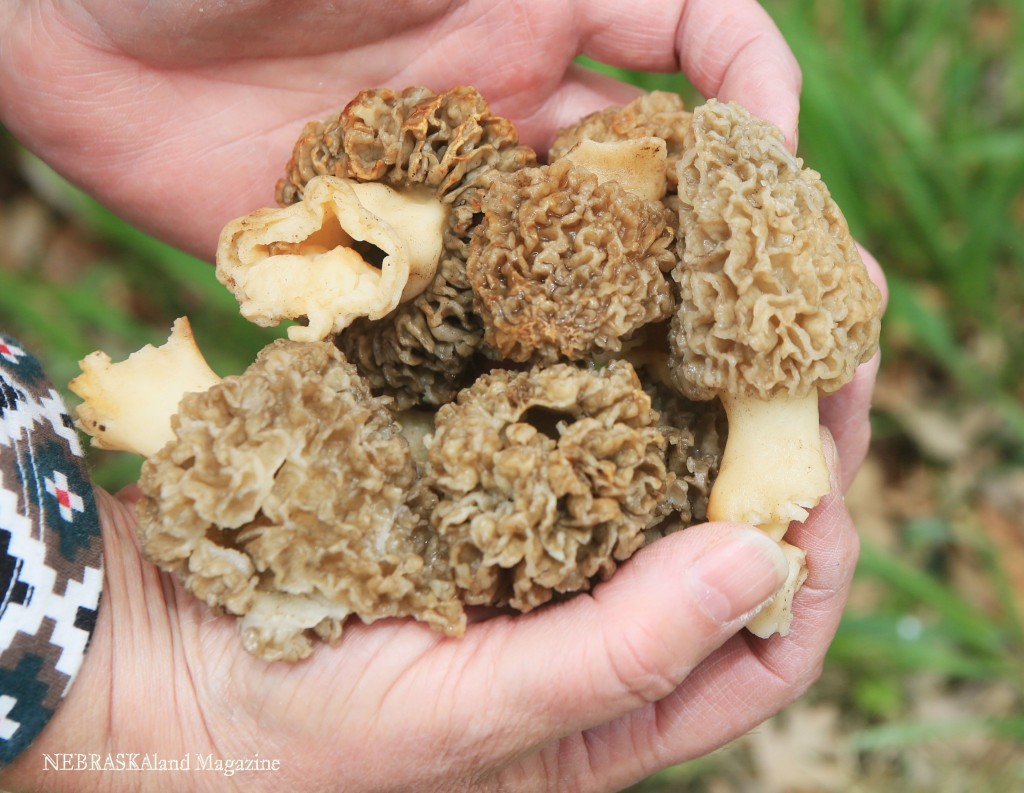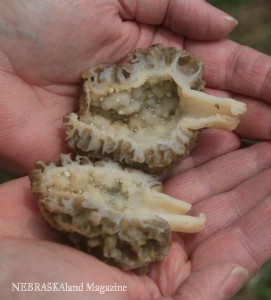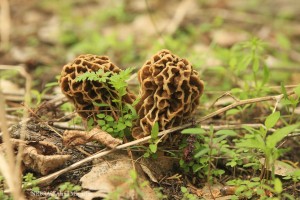
It’s official, Lincoln County is in the books for morel mushrooms this year. This week co-workers of mine found the mighty morel mushrooms at one of our wildlife management areas in southwest Nebraska and today I found more along the river near North Platte.
Resent rains along with sunshine and warming temperatures have prompted the mushroom to sprout. This weekend I’m sure many morel collectors will be out hunting the rich, nutty mushroom.
The central and western part of the state seems to warm up a bit slower than our eastern counterpart, but now is the time to get outside and search for morels. The morel season usually runs mid-to-late April through May.
There are many conditions that affect the arrival of morels: temperature, snow, rain, and sun. When conditions are right morels will appear.
Look for warm rains followed by warm sunny temperatures. Some morel pickers say the night temperatures must be above 50 degrees before the mushrooms sprout, while others swear by the lilac bloom. There is the south-facing slope theory where the increased exposure to sunlight on south-facing slopes seems to produce more mushrooms earlier.

Morels can be found in a variety of places; moist wooded areas near dying or dead elm or ash trees, timbered areas along rivers and streams. In southwest and central Nebraska, morels are more likely to be found under ash, cottonwood and elm trees, especially dead or dying ones. I’ve even found morels among cedar trees. Recently burned woods are also frequently cited as morel producing areas.
Morels are one of the most unmistakable fungi. All morels have a round to cone-shaped cap that is honeycombed with pits and ridges that resemble a sponge. Morels have a short stalk are hollow through the cap and stem and host a warm brown to tan or yellowish color.

False morels should not be mistaken for morels and should not be eaten. They will have a cotton-like fiber in the stem. Sliced long ways the difference is noticeable as false mushrooms are not hollow. The cap will not be honeycombed and pitted like the morel but more “brain-like”, they will be red-brown or dark brown to black in color.
Picking and packing them home
Using fingers or a utility tool, snip morels off just above the ground. It is important to not disturb the mycelium by pulling the mushroom entirely from the ground, but pinching the very base of the stem. Keep your collection as free from dirt as possible.
Carry an onion sack or some type of mesh bag. Mesh bags have been specifically designed to help protect your harvest and allow the spore of the mushroom to be released back into the forest as you travel through. This is particularly important when you’re hunting areas you want to go back to year after year as predictable, favorite spots.
Air circulation and avoidance of moisture are essential in keeping your morel pickings fresh. Avoid using plastic bags or putting your morels in a warm or humid place. Morels will deteriorate rapidly if not kept cool and dry after they are picked.
Once you’ve got your mushrooms home, take them to the sink and rinse them with cold water to remove any loose dirt and foreign particles like bugs. Slicing the morel lengthwise into halves will make this easy.
This next step is optional and may not need to be done at all. Once you’ve rinsed the morels thoroughly, fill the sink or a bowl with cold water and add one or two tablespoons salt to the water. Drop your morels in and soak. This is only needed to help bring any little critters out of the morels. If you feel your morels are critter-free, skip the salt all together because your morels will absorb the salt damping the true flavor. If you chose to use the salt bath, don’t let them sit for more than an hour.
To store morels, dry them and put them in glass jars, but keep the lids loose rather than tightening them. Cleaned mushrooms can be sliced and frozen or canned for later use.
Sautéed in wine sauce and garlic, grilled over coals, battered and deep-fat fried or stuffed and baked, morels are the perfect companion to a meal of game, such as venison steaks, trout, pheasant, wild turkey, duck or goose. They are also a delicious addition to thick creamy soup.

Always get permission before entering private property to hunt mushrooms. If you use one of the many wildlife management areas or state recreation areas to mushroom hunt, keep safety in mind as turkey hunters will be in the field as well. A valid Nebraska Park Permit is required on state recreation areas and if you use a wildlife management area consider purchasing a habitat stamp as the stamp provides much of the funding for these public places.
The post Searching for the Mighty Morel appeared first on NEBRASKALand Magazine.























